The Economics and Statistics Division maintains archives of previous publications for accountability purposes, but makes no updates to keep these documents current with the latest data revisions from Statistics Canada. As a result, information in older documents may not be accurate. Please exercise caution when referring to older documents. For the latest information and historical data, please contact the individual listed to the right.
<--- Return to Archive
For additional information relating to this article, please contact:
June 13, 2023HOUSING: NON-INDIVIDUAL OWNERSHIP AND ASSESSED VALUES 2021 Statistics Canada's Canadian Housing Statistics Program shows that in 2021, corporations owned 5.6% of residential properties in Nova Scotia while governments owned 1.9%. Individuals owned 92.0% of residential properties in Nova Scotia.
In all provinces for which this data is reported (Nova Scotia, New Brunswick, Ontario, Manitoba and British Columbia), individual owners hold the vast majority of residential properties. British Columbia had the lowest share of residential properties owned by individuals at 90.1%.
Corporations owned between 5.5% (Manitoba) and 5.9% (New Brunswick and Ontario) of residential properties in these provinces. Government ownership of residential properties ranges from 1.4% (in Ontario) to 3.9% (in British Columbia).
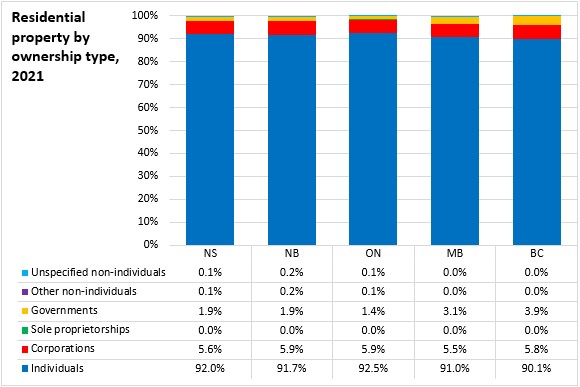
The majority of residential properties held by individuals were single dwelling units in all reporting jurisdictions except British Columbia, where condominium apartments and row houses make up a larger portion of individual residential ownership.
The bulk of residential properties owned by governments across the reporting provinces were classified as vacant land with most of the remainder being single dwelling units and units in multi-unit buildings.
Vacant land also made up the largest portion of residential properties held by corporations in most reporting provinces, with the exception of British Columbia. Single dwelling units, dwellings in multi-unit buildings and condominium apartments made up the next largest shares of residential properties held by corporations.
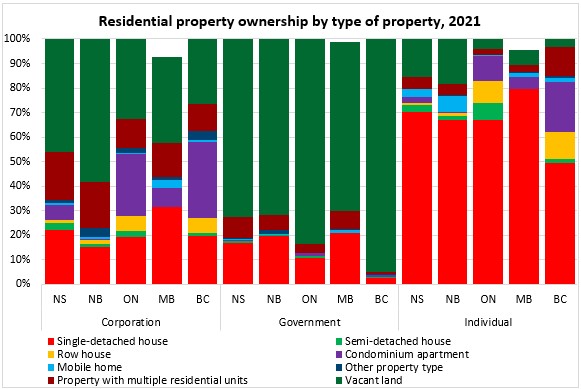
Assessed values
The Canadian Housing Statistics Program also reported updated assessed values for residential properties in 2021. Nova Scotia's average residential assessed value was $183,000 in 2021. Among reporting provinces, average assessed values were lower in the Maritimes and highest in British Columbia.
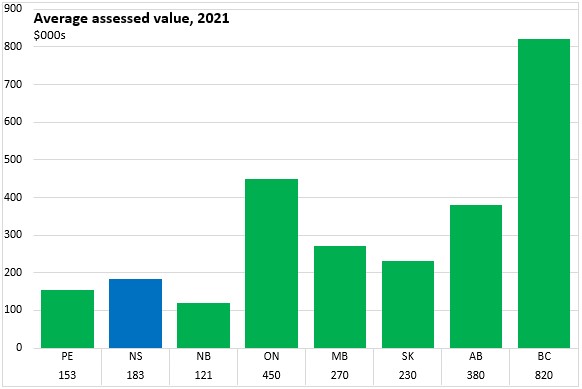
Within specific Nova Scotia census agglomerations and the Halifax census metropolitan area, assessed values were highest in Halifax ($310,000) in 2021 and lowest for New Glasgow ($116,000) and the Cape Breton regional municipality ($95,000).
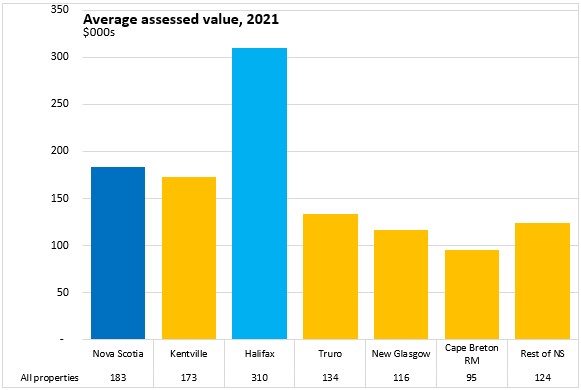
Assessed values were highest for row houses and condominiums, though this reflects the disproportionate concentration of these structures in the higher-valued Halifax market. Single-detached and semi-detached dwellings had the next highest assessed values, with Halifax reporting particularly high values for single-detached dwellings. Mobile homes reported average assessed values of under $100,000 in every reported community.
Average assessed values were higher for multi-unit buildings, particularly in Halifax.
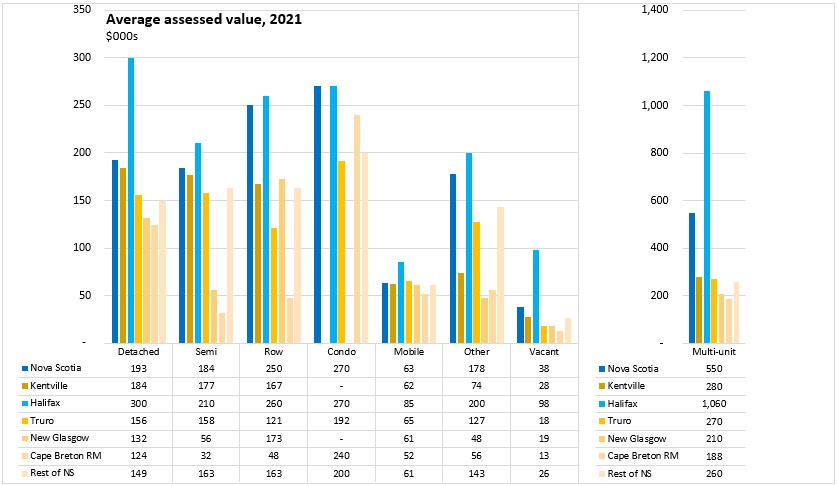
Average assessed values increased by 2.8% for all residential properties in Nova Scotia from 2020 to 2021. Halifax reported the fastest growth while New Glasgow and the Cape Breton regional municipality reported the slowest growth.
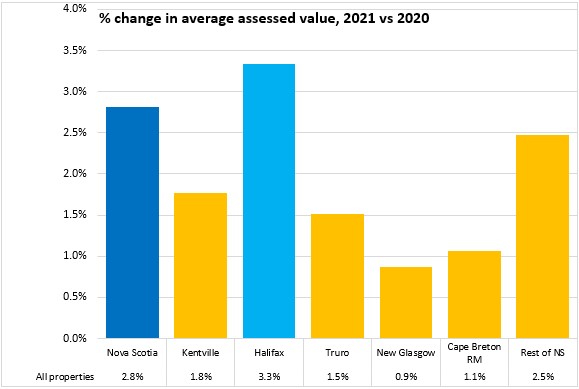
Average assessed values grew fastest for condomiuniums. Average assessed values were down for row-houses.
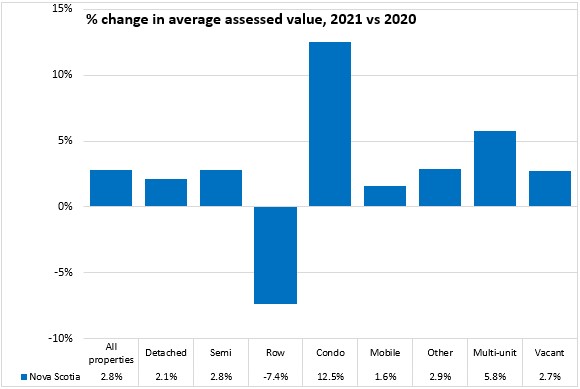
Source: Statistics Canada. Table 46-10-0023-01 Business and government ownership of residential properties, by legal type and industry; Table 46-10-0027-01 Residency participation of residential properties, by property type and period of construction; Table 46-10-0053-01 Ownership type and property use by residential property type and period of construction
<--- Return to Archive